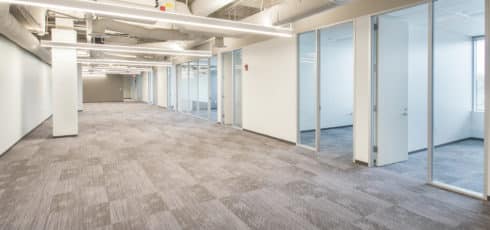At AQUILA, we have worked with hundreds of clients to make sure they understand exactly what is included in their quoted rental rates. We understand how important it is for your company to know where your money is going each month.
A significant portion of gross rent comes from operating expenses. This article is intended to help you better understand the operating expense component of rent and will specifically touch on these questions:
- What are operating expenses?
- What is (and isn’t) included in operating expenses?
- What aspects of your operating expenses can be negotiated?
What are operating expenses?
Operating expenses are the costs associated with operating and maintaining a commercial property such as an office building or retail center.
Depending on the lease structure, you will either pay operating expenses as a component of gross rent or in addition to base rent. In the Austin market, triple net (NNN) leases are typical for Class A and B office space, and operating expenses are paid on top of the quoted NNN rental rate.
In a multi-tenant building, each tenant typically pays their pro-rata share of operating expenses based on the size of their space relative to the building, whereas in a single-tenant building, the tenant is typically responsible for 100% of total operating expenses.
What is included in operating expenses?
Operating expenses are made up of three main components:
- Property Taxes: The taxes charged to the property owner by taxing entities. To learn more about how property taxes are calculated in Austin, read our article: What are Commercial Property Tax Rates in Austin, Texas?
- Insurance: Insurance is the cost for the owner to ensure the building, which is typically required by the lender that is financing the property.
- Common Area Maintenance fees: These expenses typically include management fees, building maintenance and repairs, utilities, administrative fees, management salaries, and fees, property lighting, parking lot maintenance, and more. Exactly what is included varies by property type and by the landlord. Get more information on what is included in CAM fees in our article What Are Common Area Maintenance Fees?
What isn’t included in operating expenses?
Operating expenses should not include debt service, CAPEX, property marketing costs, capital reserves for future large repair projects, leasing commissions, or tenant improvements allowances.
Is op/ex negotiable?
Typically, the property tax and insurance components of operating expenses are not negotiable. These items are considered uncontrollable, and, therefore, they are passed directly through to the tenant.
Controllable expenses, such as CAM expenses, are negotiable to some degree as landlords and property managers can control how efficiently a building is being managed. Negotiating a cap on annual operating expense escalations is the most common form of tenant protection.
How do operating expense caps work?
There are three ways to cap operating expenses:
Year-to-Year Cap
In a Year-to-Year Cap (also known as a Non-Cumulative Cap), there is a cap on the percentage that the landlord can increase the CAM year-over-year.
Example:
With a 3% Year-to-Year Cap, if the CAM increased by 2% the first year, the tenant is responsible for paying that 2% increase.
If the next year, CAM increases by 4% the tenant is responsible for paying only a 3% increase, as they are protected by the Year-to-Year Cap.
For this reason, tenants prefer year-to-year caps, as it keeps CAM increases to a predictable level.
Cumulative Compounding Cap
In a Cumulative Compounding Cap, there is again a cap set on the percentage that the landlord can increase the CAM each year. However, in this situation, the landlord can always recoup any unused increases from previous years. This is the most common form of operating expense cap.
Example:
With a 3% cumulative compounding cap, if CAM increases by 2% in the first year, the tenant is responsible for paying this 2% increase.
If the next year, CAM increases by 4% the tenant is responsible for paying this 4% increase because the landlord can collect the 3% cap for this year and the leftover 1% from last year.
For this reason, landlords prefer cumulative compounding caps, as it allows maximum flexibility.
Hopefully, now you have a better understanding of what makes up your operating expenses, and how you can best manage increasing expenses over time.
To dive deeper into what makes up your operating expenses, check out our articles on what makes up Common Area Maintenance fees and how property taxes are calculated in Austin, Texas.
Popular Articles:
- Your Guide to the Elements of a Commercial Lease (Terms, Definitions)
- Typical Types of Commercial Leases in Austin, Texas (NNN lease vs. Gross lease, more)
- What are Common Area Maintenance (CAM) Fees?
- What are Commercial Property Tax Rates in Austin, Texas?














